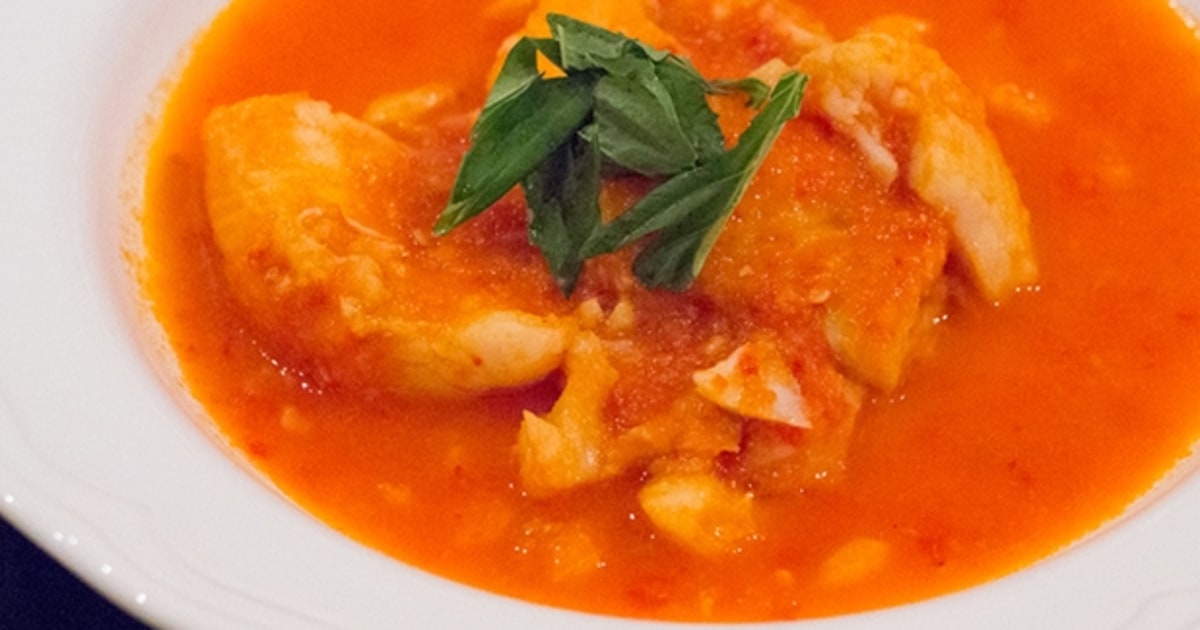Craving comforting classics but committed to a Paleo lifestyle? Don’t despair! This guide unveils the secrets to transforming beloved comfort food recipes into healthy, Paleo-friendly delights. We’ll explore ingenious ingredient swaps, master Paleo baking techniques, and craft delicious sauces and condiments that rival their traditional counterparts. Prepare to rediscover your favorite dishes with a vibrant, wholesome twist, preserving the textures and flavors you love while nourishing your body with nutrient-rich ingredients.
From creamy Paleo Alfredo sauce to perfectly tender pot roast, we’ll navigate the challenges of grain-free and dairy-free cooking, offering step-by-step instructions, nutritional comparisons, and expert tips to ensure success. Discover the power of substituting common ingredients with Paleo alternatives, unlocking a world of flavor and satisfaction without compromising your health goals. This journey into Paleo comfort food is not just about adaptation; it’s about enhancing your culinary experience with a focus on wholesome goodness.
Mastering Paleo Meat and Vegetable Preparations
Paleo cooking centers around whole, unprocessed foods, emphasizing nutrient-rich meats and vegetables. Mastering the preparation of these ingredients is key to creating satisfying and flavorful Paleo comfort food. Proper cooking techniques unlock the full potential of both meat and vegetables, resulting in dishes that are both delicious and nourishing. This section will delve into specific techniques for achieving optimal results.
Paleo Pot Roast Recipe
A perfectly tender pot roast is the epitome of comfort food. Choosing the right cut of meat is paramount. For a Paleo pot roast, a chuck roast, a brisket, or a bottom round are excellent choices. These cuts, while tougher, become incredibly tender when slow-cooked, developing rich, deep flavors. Avoid lean cuts, as they tend to dry out during prolonged cooking.
Ingredients:
- 3-4 pound chuck roast
- 1 large onion, roughly chopped
- 2 carrots, roughly chopped
- 2 celery stalks, roughly chopped
- 4 cloves garlic, minced
- 2 tablespoons olive oil
- 2 cups beef broth
- 1 teaspoon dried rosemary
- 1 teaspoon dried thyme
- Salt and pepper to taste
Instructions:
- Preheat oven to 325°F (160°C).
- Season the chuck roast generously with salt and pepper.
- Heat olive oil in a large oven-safe pot or Dutch oven over medium-high heat. Sear the roast on all sides until nicely browned, about 2-3 minutes per side. This step helps to develop a rich crust and enhance the flavor.
- Remove the roast from the pot and set aside.
- Add the chopped onion, carrots, and celery to the pot and cook until softened, about 5-7 minutes. Stir in the minced garlic and cook for another minute until fragrant.
- Return the roast to the pot. Pour in the beef broth, add rosemary and thyme, and bring to a simmer.
- Cover the pot tightly and transfer to the preheated oven. Cook for 3-4 hours, or until the roast is fork-tender. The meat should easily shred with a fork.
- Remove the roast from the pot and let it rest for 10-15 minutes before shredding or slicing. The resting period allows the juices to redistribute, resulting in a more tender and flavorful roast.
- Serve the shredded or sliced roast over mashed cauliflower or alongside roasted vegetables.
Paleo Vegetable Preparation Methods
Vegetables form the vibrant and nutritious backbone of Paleo cuisine. Choosing the right preparation method enhances both texture and flavor, maximizing their nutritional benefits.
The following are five common comfort food vegetables and their Paleo-friendly preparation techniques:
- Sweet Potatoes: Roasting sweet potatoes brings out their natural sweetness and creates a caramelized exterior. Imagine the vibrant orange flesh, glistening with a touch of oil and spices, its texture soft and yielding.
- Carrots: Roasting or steaming carrots preserves their sweetness and delivers a tender-crisp texture. Steaming retains more nutrients, while roasting creates a subtle caramelization.
- Broccoli: Steaming or roasting broccoli keeps it bright green and retains its nutrients. Roasting intensifies its flavor and creates a slightly charred, slightly crunchy exterior.
- Brussels Sprouts: Roasting Brussels sprouts brings out their nutty flavor and creates a crispy exterior. Imagine the small, tightly packed leaves, their edges browned and slightly crisp, the inside tender and slightly sweet.
- Green Beans: Sautéing or steaming green beans preserves their vibrant green color and crisp-tender texture. Sautéing with garlic and herbs adds a depth of flavor.
Tenderizing Tougher Cuts of Meat
Tenderizing tougher cuts of meat is crucial for achieving optimal texture and flavor in Paleo dishes. Several techniques can be employed to break down tough muscle fibers.
Several methods can be used to ensure tender meat:
- Slow Cooking: Low and slow cooking methods, like braising or pot roasting, break down collagen and connective tissues, resulting in incredibly tender meat. Imagine the meat falling apart effortlessly with a gentle fork.
- Marinating: Marinades, particularly those containing acidic ingredients like vinegar or lemon juice, help to tenderize meat by breaking down proteins. The marinade also infuses the meat with flavor.
- Mechanical Tenderizing: Using a meat mallet or a specialized tenderizing tool physically breaks down muscle fibers, resulting in a more tender texture. Imagine the meat, once tough, now yielding easily under pressure.
- Partial Freezing: Partially freezing a tough cut of meat before slicing or pounding makes it easier to tenderize without tearing the fibers. The slight firmness makes it easier to work with and prevents excessive damage.
Understanding Paleo Dietary Principles and their Application to Comfort Food

The Paleo diet, inspired by the presumed diets of our Paleolithic ancestors, emphasizes whole, unprocessed foods while excluding grains, legumes, dairy, and refined sugars. This approach profoundly impacts the creation of comfort food, transforming familiar dishes into healthier, nutrient-rich alternatives. By focusing on naturally occurring ingredients, Paleo cooking prioritizes the nutritional density and satiety often missing in traditional comfort food recipes.
Paleo principles dictate a focus on lean proteins, healthy fats, and an abundance of fruits and vegetables. This framework encourages the use of ingredients like grass-fed beef, wild-caught fish, poultry, various colorful vegetables, nuts, and seeds. Conversely, refined carbohydrates, processed foods, and added sugars, common components of many comfort foods, are strictly avoided. This careful selection of ingredients directly influences the taste, texture, and overall nutritional profile of the resulting dishes.
Paleo Comfort Food: Health Benefits
Adopting a Paleo approach to comfort food offers several potential health benefits. The elimination of processed foods and added sugars reduces the intake of inflammatory compounds, contributing to improved gut health and reduced risk of chronic diseases like type 2 diabetes and heart disease. The emphasis on lean proteins and healthy fats promotes satiety, helping to manage weight and stabilize blood sugar levels. Moreover, the increased consumption of fruits and vegetables provides a rich source of vitamins, minerals, and antioxidants, supporting overall well-being and boosting the immune system. For example, the high fiber content in vegetables aids in digestion and promotes regularity, while the omega-3 fatty acids found in fatty fish contribute to cardiovascular health. The abundant antioxidants in colorful fruits and vegetables combat free radical damage, reducing the risk of cellular aging and chronic diseases.
A Weekly Paleo Comfort Food Meal Plan
This meal plan demonstrates the versatility and nutritional balance achievable with Paleo comfort food. It emphasizes variety to avoid monotony and provides a good balance of macronutrients.
Monday: Sheet Pan Lemon Herb Chicken and Veggies – Juicy chicken breasts and colorful vegetables (broccoli, bell peppers, zucchini) roasted together with lemon juice and herbs. Imagine the vibrant colors of the roasted vegetables, their slightly charred edges contrasting with the tender chicken. The aroma of fresh herbs fills the kitchen as it roasts.
Tuesday: Paleo Shepherd’s Pie with Sweet Potato Topping – Ground beef or lamb simmered with carrots, celery, and onions, topped with a creamy mashed sweet potato crust. Picture the rich, savory filling nestled beneath a fluffy, golden-brown sweet potato topping, a comforting and satisfying meal.
Wednesday: Cauliflower Mash with Pan-Seared Salmon – Creamy cauliflower mash, seasoned with herbs and spices, served alongside pan-seared salmon fillets. The delicate texture of the cauliflower mash provides a comforting base for the rich, flaky salmon. The subtle flavors complement each other beautifully.
Thursday: Zucchini Noodles with Meatballs – Spiralized zucchini noodles tossed with homemade Paleo meatballs (ground meat, eggs, herbs) in a simple tomato sauce. Imagine the vibrant green zucchini noodles, contrasting with the rich brown meatballs, all coated in a bright red tomato sauce. The dish is both light and satisfying.
Friday: Paleo Chicken Pot Pie with Cassava Crust – Tender chicken and vegetables in a creamy sauce, encased in a flaky cassava crust. Picture a golden-brown crust, hiding a rich and flavorful filling of tender chicken and mixed vegetables. This comforting dish is a healthy twist on a classic.
Embarking on a Paleo culinary adventure doesn’t mean sacrificing the comforting flavors of your favorite dishes. By mastering the techniques and ingredient substitutions Artikeld in this guide, you can confidently create Paleo versions of classic comfort foods that are both satisfying and nutritious. From perfectly risen Paleo bread to rich and flavorful sauces, you’ll discover a world of possibilities, transforming your kitchen into a haven of healthy, delicious meals. Embrace the challenge, savor the results, and enjoy the journey towards a healthier, happier you.
FAQ Explained
Can I use coconut flour in all recipes?
While coconut flour is a great Paleo option, it absorbs more liquid than other flours. Recipes may require adjustments in liquid amounts depending on the specific flour used.
What are good substitutes for sugar?
Maple syrup, honey, and fruit purees are excellent Paleo sugar substitutes, though they should be used in moderation.
How do I prevent Paleo baked goods from being dry?
Use enough liquid in your recipes and consider adding ingredients like mashed bananas or applesauce for moisture.
Are all Paleo recipes gluten-free?
Yes, Paleo recipes are inherently gluten-free as they exclude grains.
Can I freeze Paleo meals?
Yes, many Paleo meals freeze well. Allow them to cool completely before freezing in airtight containers.


